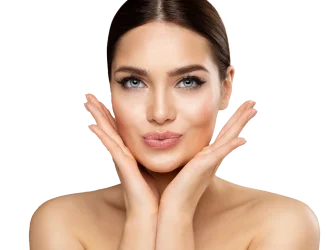Some of the most visible signs of aging first appear on the face. Although the changes appear gradually, there may come a day when you look in the mirror and decide that the face you see doesn’t reflect the way you feel about yourself.
If you’d like to look as good as you feel, a facelift can help. Also known as rhytidectomy, a facelift smoothes the loose skin on your face and neck, tightens underlying tissues, and removes excess fat. (See Figures A, B, and C.) As a result, your face will appear firmer and fresher.
IS A FACELIFT RIGHT FOR YOU?
Facelifts are most commonly performed on patients in the 40-70 age range. However, the procedure can produce good results for people in their 70s and 80s as well, given they are in good health. You may be a good candidate for a facelift if you have any of the following types of conditions:
- A deep line that runs from the corner of your nose to the corner of your mouth
- Loss of a well-defined jaw-line
- Deep wrinkles in the cheeks and sagging skin near the cheekbones
- Loose skin, wrinkles or excess fatty tissue in the neck.
RECOVERY
Although everyone heals at a different rate, recovery will follow this general timeline:
The first day:
In this early stage of healing, you should rest with your head elevated to help minimize bruising and swelling.
Within the first week:
Swelling reaches its peak, and then begins to subside. Bandages will be removed and you may shower. Stitches will dissolve or be removed. You may return to light activity, but continue to sleep with your head elevated. You can wear makeup to conceal any discoloration.
Within two weeks:
Most of the bruising will disappear. You may resume many of your normal activities, including non-strenuous work.
After several weeks:
You may resume exercise. Swelling and puffiness will continue to subside. Numbness in the facial area will diminish; however, some numbness may persist for several months.
Throughout the healing period, you should avoid exposure to direct sunlight and, for the long term, be conscientious about using sun block to protect your skin.

FIGURE A
Incisions usually begin above the hairline at the temples, follow the natural line in front of the ear, curve behind the earlobe into the crease behind the ear, and into or along the lower scalp.

FIGURE B
Facial, neck tissue and muscle may be separated; fat may be trimmed or suctioned and underlying muscle may be tightened.

FIGURE C
After deep tissues are tightened, the excess skin is pulled up and back, trimmed and sutured into place.



